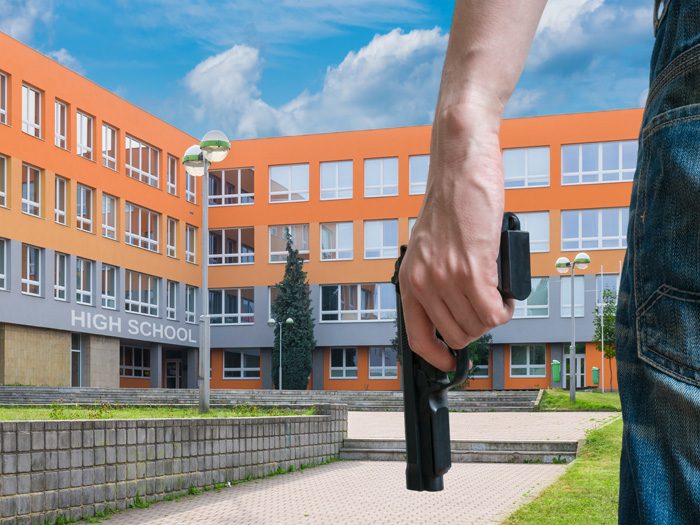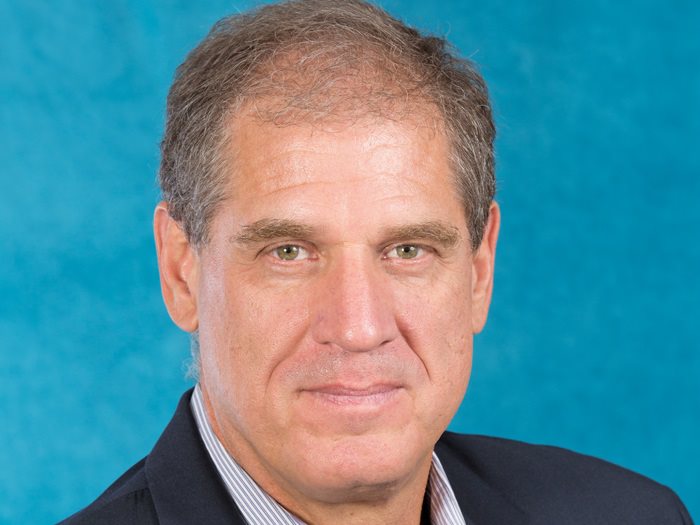Northwestern University’s Proactive Plan for Preventing Campus Violence

With mass shootings in both Dayton and El Paso this August, preventing incidents of active violence is in the front of educators’ minds as students head back to school. And a wealth of additional safety measures are being implemented.
New aggression detectors, which are designed to pick up loud noises like screams and gunshots, automatically alert authorities when they perceive danger. Other schools have introduced curvy hallways after being inspired by the zig-zagged battle trenches in World War I that made it difficult for shooters to hit multiple targets.
Despite these efforts to increase safety, schools remain uniquely vulnerable to active violence incidents because of the open environments required for education.
“Schools are not designed to be like Fort Knox. They’re more open and vulnerable to attack,” Chris Parker, focus group leader and underwriter at Beazley, told Risk & Insurance®. Parker serves as Beazley’s head of terrorism, political violence and kidnap and ransom coverage.
“You’ve got an awful lot of people there, as well. Some people that are under an awful lot of stress with either exams or bullying. There are so many different things that are going on in school that makes it very, very vulnerable to these sorts of attacks.”
This unique vulnerability inspired Northwestern University to launch an extensive active violence prevention and education campaign that other companies can use to make their businesses safer.
“I’m sure we’re not alone here at Northwestern with trying to balance levels of safety and increased security levels with freedom to move about our campuses,” Northwestern’s Director of Emergency Management Greg Klaiber said in a recent webinar aimed at helping other businesses learn from their program.
“These situations are unpredictable, they can occur anywhere and without situational awareness, without knowing what is going on around you at all times, no matter where you are, it could impact your safety.”
Early Identification is Key
Central to Northwestern’s efforts to reduce incidents of active violence on campus is their Behavioral Consultation Team (BCT).
The team meets on a weekly and on an as-needed basis to investigate reports of suspicious behavior that could lead to an active violence situation. Their primary goal is to identify people who are thinking about committing violence on campus and to intervene before a violent event occurs.
“Early identification really is the key to helping mitigate violence potential,” Michelle Hoy-Watkins, director of threat assessment at Northwestern and head of BCT, said during the webinar.
BCT uses guidelines from the Department of Homeland Security to identify if someone is on “a pathway to violence,” according to Hoy-Watkins. The Department of Homeland Security uses the Calhoun and Weston model to determine who is on a path to violence.
The model begins with a grievance that a person has against a particular group or institution that becomes violent. From there, the person proceeds to planning, preparation and breach attack phases where they begin to imagine the event, collect the items they need to carry it out and test the security of the location before carrying out an attack.
In order to prevent attacks at Northwestern, the BCT reviews reports for warning signs of grievances, such as one student telling another that their anger towards a specific group makes them want to commit a violent crime.
They also work with facilities services on campus to make sure that locks and alarms aren’t being tampered with.
Educate Your Community
Another facet of Northwestern’s program is education. The campus holds educational presentations to help students, faculty and staff recognize the signs that someone may be considering a shooting.
These programs help people learn to recognize behaviors that could be threatening, rather than stereotyping individuals or groups.
“People fall back on their prejudices and they don’t report behaviors. Instead they report people and what they look like,” Klaiber said.
The campus training includes much of the information that Klaiber, Hoy-Watkins and their colleague Eric Chin, deputy chief of police, shared during the webinar. For the university, educating students and creating a culture of safety are the keys to preventing active violence events.
“We want to create a culture where everyone takes responsibility for helping to mitigate and identify potential concerns,” Hoy-Watkins said.
Part of creating a culture of safety on campuses is making sure reporting incidents is easy. At Northwestern, students can call or email the threat assessment team to report suspicious behavior. The campus also has an anonymous reporting option that can be accessed through an online portal.
Parker emphasized the importance of pulling communities together to stop active violence events before they occur.
“We’d like more to be done on the pre-event stuff to try and even stop the weapon from getting into the campus in the first place,” he said.
“You can’t tell how many events it’s prevented because they obviously didn’t happen. But we’ve seen it certainly with all the works that the response company has done with certain clients just to build these sort of plans, it’s certainly training people, which they know what to do in the event that something happens.”
Social Media Can Stop Violence Before it Happens
Social media can be a key place where people go to air violent thoughts or grievances before an active violence situation occurs, according to Parker.
“ We’d like more to be done on the pre-event side to try and stop the weapon getting into the campus in the first place,” he said.
“Monitoring social media and searching a school name against key words that could indicate an attack — and there are companies out there, software that will do this — can help to identify a potential risk and enable you to involve the police to actually try to prevent a crisis.”
People within a school community should also report any suspicious behavior they see online that could indicate that a person is thinking of committing an active violence event.
According to Parker, anonymous reporting systems that can be accessed anywhere either through phones or computers help encourage people to report behaviors they see on social media.
“If someone overhears someone or sees something on social media, it’s very important that they are able to report it and report it anonymously,” he said.
During an Active Violence Event
Educational efforts can’t just address how to prevent an event, however. They also have to give people guidance on what they can do to stay safe once an event occurs.
Active violence situations often last only a few minutes, which makes it difficult for law enforcement to arrive in time to prevent the incident.
According to Northwestern’s examination of FBI statistics from active shooter studies conducted between 2000-2017, most active violence events 70% of events ended within five minutes and 60% ended before law enforcement arrived.
Given the short duration of events, Parker said that people often need to protect themselves for only a few minutes in order to survive the event.
“I’ve been to presentations with some police officers in the States where they have said that having even five or six more minutes to get there would really help,” he said.
At Northwestern, this training goes beyond the traditional “run, hide, fight” options that have predominated active violence training.
The BCT holds campus training to help prepare students, faculty and staff in case an active violence event occurs on campus. They also created a Youtube video which people can access at any time in order to learn how to protect themselves.
According to Klaiber, protecting yourself from an active violence event begins every time you enter a room.
“Have you taken ten seconds to scan where the exit signs are, have you looked to see that there’s more than one exit. Have you thought about beforehand how am I going to get out of here quickly if an incident were to occur? We all need to start thinking about that,” he said.
This kind of proactive preparation is key because, as we’ve seen, active violence can happen anywhere.
“Unfortunately, as the recent shooting at a garlic festival shows, it can happen anywhere. It’s indiscriminate. Nobody can predict it so you need to be prepared,” Parker said.
To learn more about Northwestern’s efforts to keep their campus safe from active violence, check out the webinar “Active Violence Prevention, Preparation and Response.” &










